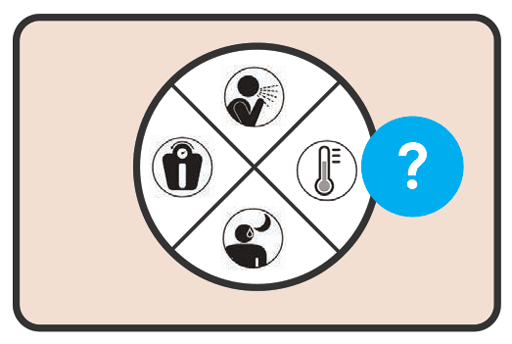Operational Handbooks
4.1 Considerations in selecting and using CAD for screening in TB programmes
CAD technologies for automated reading of digital CXR for TB detection offer a promising solution for high-TB burden countries; however, selecting the appropriate CAD product for a particular setting can be complex. When selecting a CAD product, TB programmes and implementers should consider multiple aspects of the technology and its interface with existing infrastructure, including:
2.7.2 Proposed indicators
Approaches to screening will depend on each group, and intervention-specific indicators should be developed for each approach. In general, however, the data on indicators shown in Fig. 2.5 should be collected for each targeted risk group, such as all close contacts of TB patients or all people living with HIV in care.
Fig. 2.5 Data to be collected for systematic screening programmes for TB
2.6.2 Choosing a screening programme model
The choice of screening programme will have implications for the resources required and the potential reach and effectiveness of the programme. The decision on which model to use should be based on determining which approach will be most effective for reaching the targeted risk group with the resources available. The effort and resources required to reach the target population can be limited by screening in locations where people gather for other purposes, such as health centres or workplaces, although not all populations can be reached in this way.
2.4.5 Number needed to screen to detect a person with TB
The NNS to identify one person with confirmed TB in a specific risk group is the inverse of the prevalence of detectable TB in that risk group, assuming 100% sensitivity of the screening and diagnostic tools being used.
2.4.4 Potential total yield of true TB cases
Fig. 3 shows the potential yield of screening in a range of hypothetical risk groups with a range of relative risks of TB (assuming 100% coverage, acceptance of screening, sensitivity and specificity of screening). As illustrated in Fig. 2.2, the yield of TB screening in a specific risk group (in terms of the number of TB cases detected; y axis) depends on both the size of the risk group (i.e. the prevalence of the risk factor in the general population; x axis) and the relative risk of TB for that risk group (z axis).
2.2.3 Epidemiology of TB
The main purpose of an epidemiological assessment is to identify gaps in TB case detection and opportunities for addressing those gaps through screening. The assessment should account for potential benefits, risks and costs of systematic screening, particularly in relation to other possible interventions. The analysis should be disaggregated by age, sex and geographical location, and special attention should be paid to vulnerable groups that are at high risk for exposure and/or progression to TB disease or are likely to face barriers to accessing TB services, or both.
2.1 Introduction
The two complementary approaches for improving early detection of TB are illustrated in Fig. 2.1 The primary approach is to optimize the patient-initiated pathway to TB diagnosis and treatment (for details see 2.1.1). This approach does not constitute screening and is a passive form of case detection.
1.3 Objectives of the operational handbook
This document provides practical guidance on translating WHO’s recommendations for screening into a national or local strategy with clear objectives, prioritization of risk groups and definition of the most appropriate screening approaches.
The specific objectives are:
Pagination
- Previous page
- Page 81
- Next page
 Feedback
Feedback
